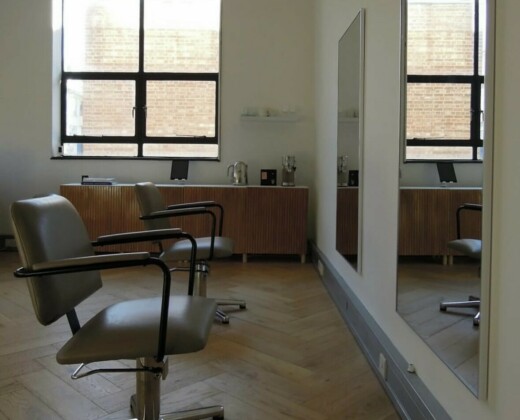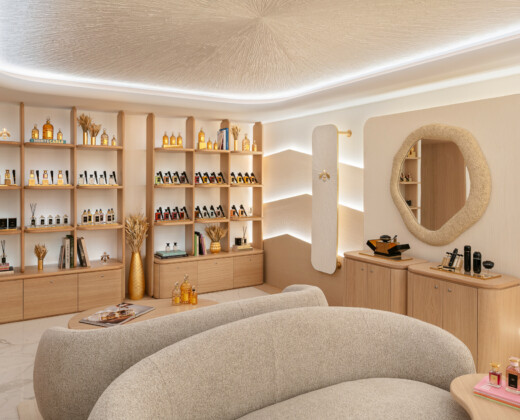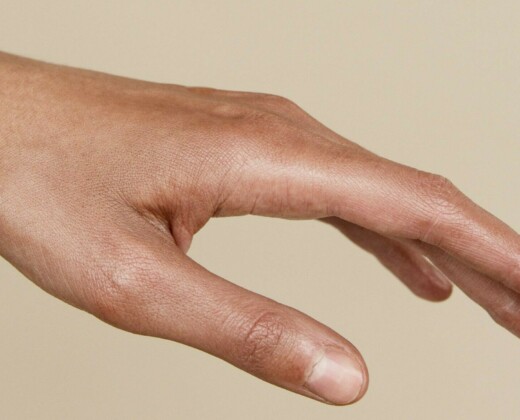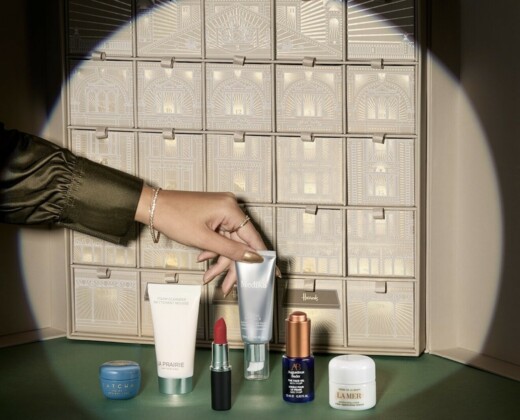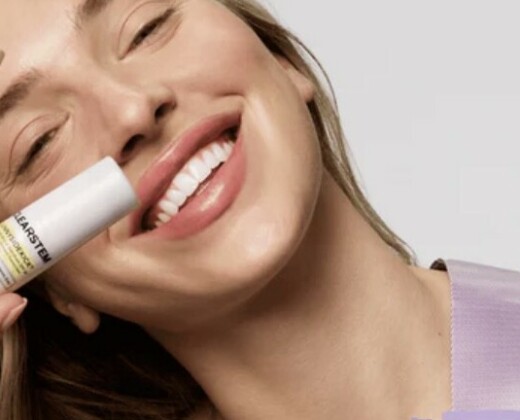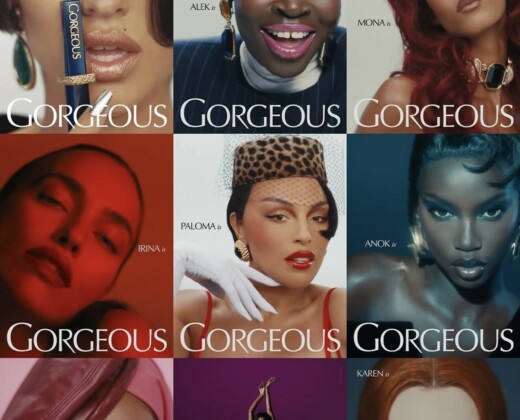Ever felt insecure about your smile? I know just how challenging this can be, which is why I would 100% recommend composite bonding. The best cosmetic treatment are the ones that require minimum drama, with maximum results, and the experts at Smiles and Smiles have blended beauty and science into a fine art.
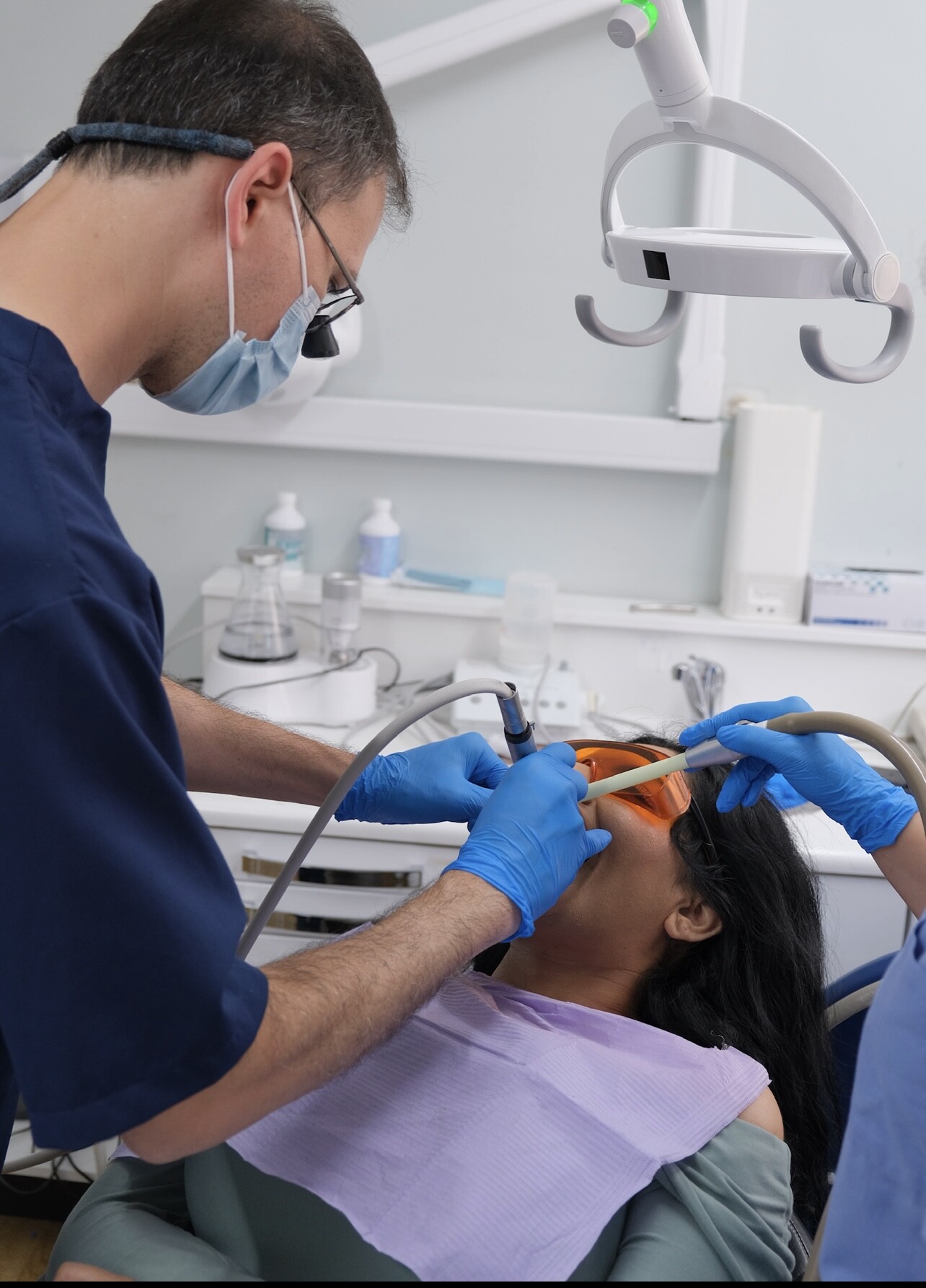
Dental treatments are among the many cosmetic treatments available to tweak your smile, most notably being whitening toothpastes and braces like Invisalign, and when done well can transform your smile without any heavy filling, drilling or disruption. However, these methods can only get you so far, if you’re feeling like you’ve tried everything, then let us introduce you to composite bonding.
If you don’t believe me, just look at my smile story. I was given the amazing opportunity to work with the professionals at Smiles and Smiles\ to create my perfect smile. The incredibly professional team handcrafted my smile and the talented Dr Joseph Schafermeyer performed the treatment that instantly boosted my confidence. It’s through my expereince with them that I can so highly recommend composite bonding as the treatment to get if you’re dreaming about smiling and laughing freely.
While composite bonding doesn’t come cheap and will depend on the condition of your teeth as well as what you are hoping to achieve, we feel that this treatment could be the transformation you’ve always dreamed of. Interested? Here’s everything you need to know, straight from leading cosmetic dentist Dr Joseph Schafermeyer I sat down with him to delve into the ins and outs of the service ahead of my treatment.
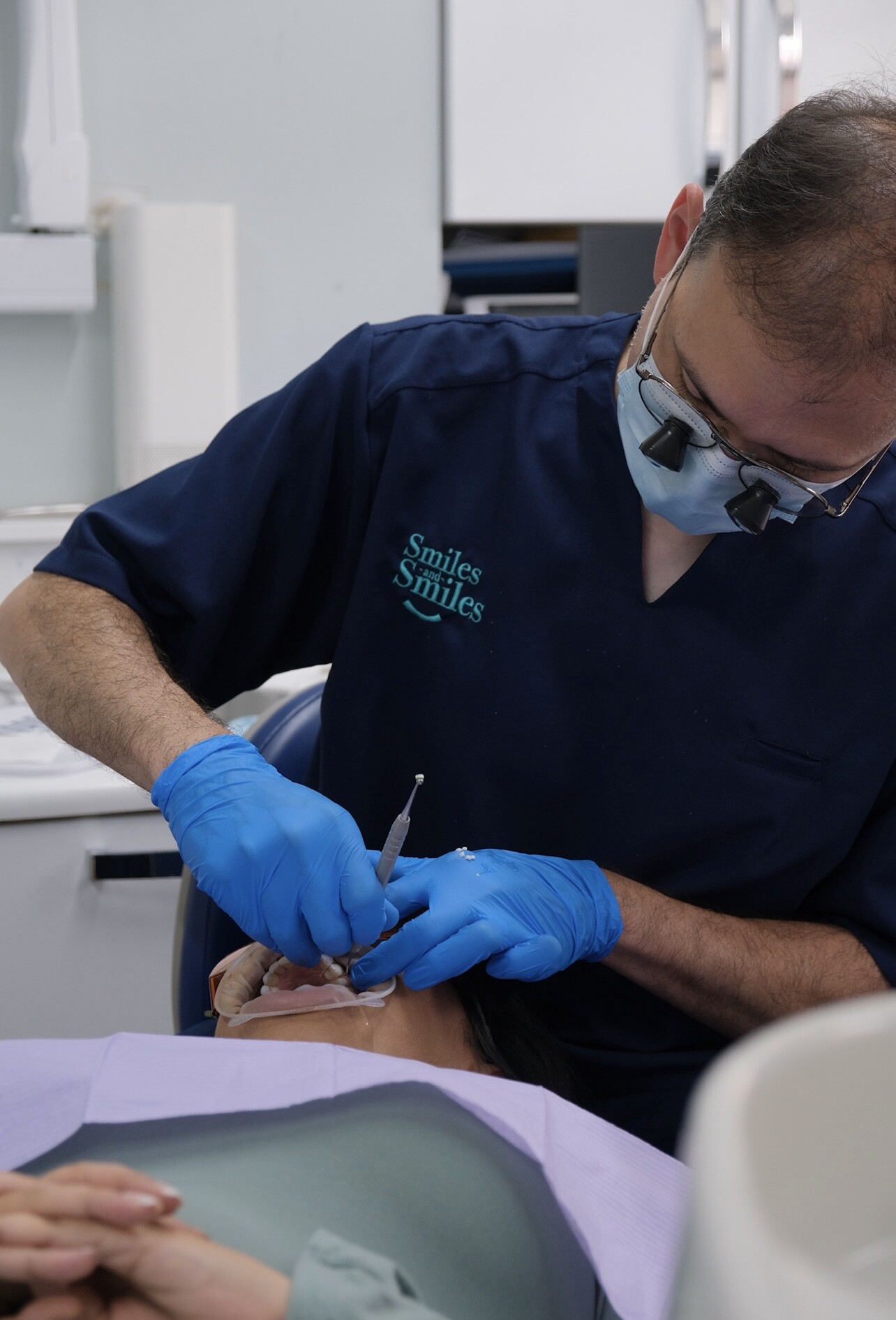
J: So, we’re here today to talk about composite bonding services. Tell me a little bit more about composite bonding and how it works, and what is your method?
D: With composite bonding, we’re adding a thin layer of composite resin to the teeth, and we can do this to each tooth individually. This would be called free-hand composite bonding where we place composite on the teeth, and then shape, adjust and polish them, usually on 8-10 teeth on the top and 8-10 teeth on the bottom. The other way to do this is what we call digital composite bonding where we take a digital scan of the teeth and have our lab do a mock-up/digital mock-up of your smile, which shows a before and after picture and any alterations to the teeth that we can make. They then create a stent for us which helps guide the placement of the composites precisely so that we can have more predictable results. For example, if you want your teeth all straight and flat like a typical Hollywood smile, or if you want your canines to be more rounded, you have more control over the design. Whereas with free hand, it is up to the skill of the dentist and how they handle the composite, and relaying your expectations to the dentist and them basically working there and adjusting and polishing it to get to the desired result that you want.
J: Perfect. I heard you offer the digital composite bonding treatments, which seems so futuristic. Could you explain a little bit more about this treatment and the technology behind it?
D: Yes, the digital composite bonding has changed things quite a bit because it allows us to see what we can accomplish before we even get you into the chair so that we can make sure it’s something that you’re happy with, and that the changes to your smile and the smile makeover itself is something that you’re able to achieve.
J: So, would the customer see that prior?
D: Yes. Basically, we get the 3D scan taken and then we make the computer model, and then once we have that model of what the teeth will look like, we send that to the patient and then they can approve it or make any changes as needed. The smile design then gets fabricated via 3D models of the teeth, along with the stents that help guide the composite placement. We’re actually going to be looking into doing individual porcelain/composite veneers as well, as it’s the same process. So, we do the digital scan, send it to our lab which then helps guide the smile makeover. The dentist and the patient will work together on the smile to make sure they get the results that they want. It then gets made and the composite is placed, and it should look exactly how did in the digital mock-up.
J: That’s so clever.
D: That’s the main benefit of having the digital scans.
J: What are the core values and mission of Smiles and Smiles? How do these values shape your approach to dentistry?
D: At Smiles and Smiles, our core values really come down to providing the best cosmetic dentistry possible while always staying ahead when it comes to technology. Our mission is simple: we want to help people become the best version of themselves by creating smile transformations that are completely tailored to them. It’s not about chasing a particular look, not like the Hollywood smile or anything—it’s about designing a smile that feels right for each individual.
Apart from that, we’re also huge on using the latest technology. Whether it’s advanced tools for precision or techniques that make the whole process more comfortable, we’re always investing in what will give our patients the best results. Staying up to date with tech doesn’t just help us make beautiful smiles, but also ensuring those smiles last too.
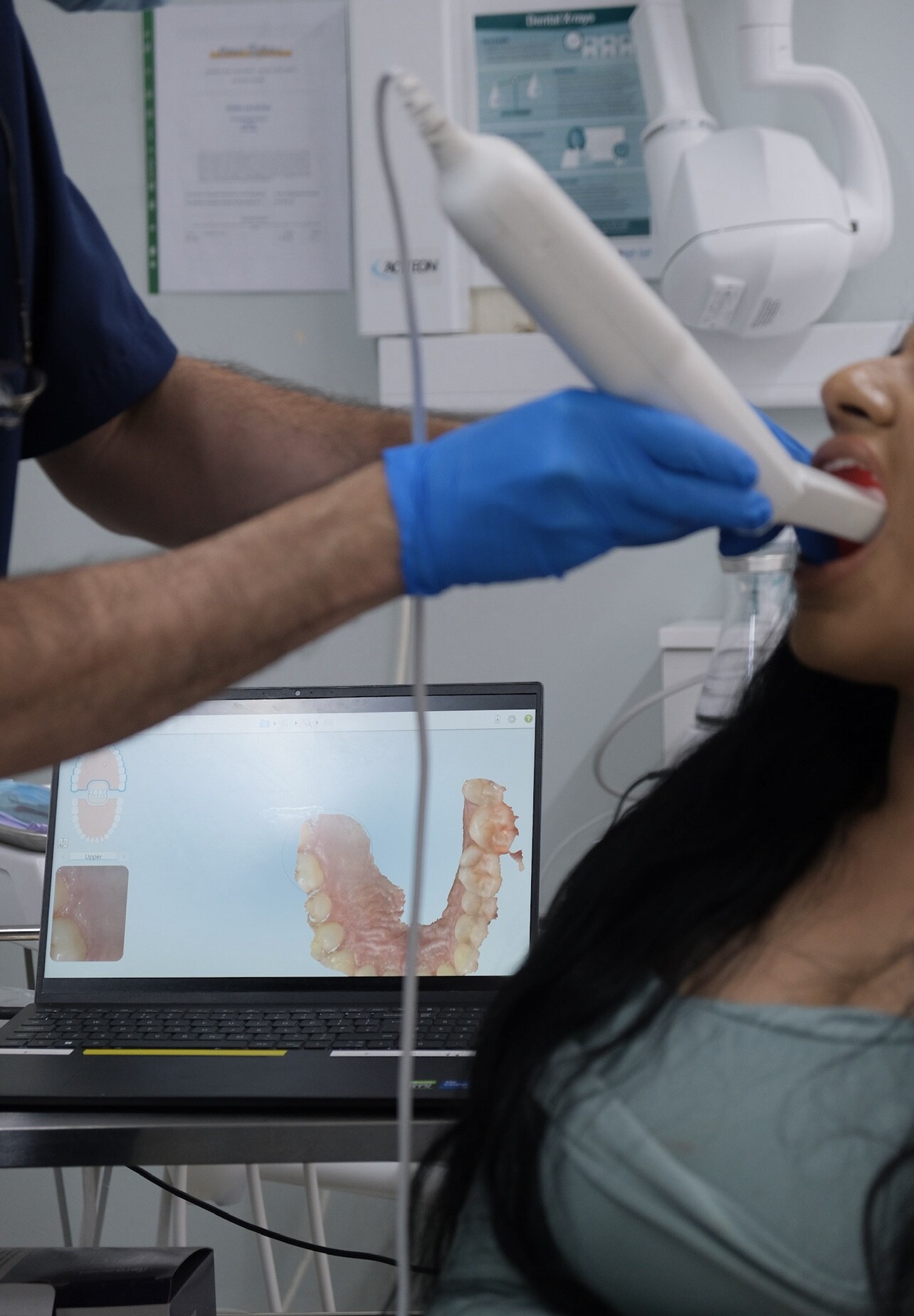
Our team is made up of experienced dentists that our patients can genuinely trust. Building that trust is everything for us, and we make sure we earn it by delivering top-quality care. From the first consultation to the final treatment, we’re there every step of the way, making sure the experience is as smooth and personalised as it can be.
At the end of the day, our values guide everything we do. We want each patient to walk out of our practice with a smile that not only looks great, but also feels like it truly belongs to them. It’s all about blending cutting-edge technology, artistry, and a patient-first approach to create results that last and make people feel amazing.
J: You’ve probably been asked this questions a million times, but I really want to know the answer, how does composite bonding differ from traditional veneers? And what are the main advantages and disadvantages of the two, or composite bonding basically?
D: So, the traditional veneer is with porcelain and in most cases, you’re often taking off 0.3mm to even a millimetre of tooth structure – so you are taking away enamel in order to make room for the veneer and have it thick and strong enough so that the porcelain doesn’t break. There are newer technologies out there for these thin porcelain veneers, which require non preparation at all. The main difference between composite versus veneers is the durability and the cost. Porcelain veneers can last 10-15 years where composite bonding would last (if taken good care of it) 5-7 years, that also means that when you’re looking at porcelain veneers and you’re doing 20 teeth, you’re going to be looking at a higher price compared to the composite bonding. With composite bonding, one of the main advantages are that it’s allowing you to do a smile makeover quicker – usually in 1-2 appointments – and its more cost effective/a lot less cost involved as you’re not doing all the lab work and having individual veneers made. In a lot if cases, it is minimally invasive because you don’t take away tooth structure. Most of the dentists who do composite bonding are adding that thin layer to the tooth. One of the big advantages is that if, down the road, you want them removed, you can with minimal compromise to the tooth structure. If you have porcelain veneers, like if you go to Turkey and have porcelain crowns, you can’t just take them off and have your natural teeth again. You have to have a full restoration and have them put back on there. Hopefully they’re not shaped like pegs, but you’ve seen those pictures of…
J: Yeah! Yeah.
D: We don’t want that. So, this is a more economical and minimally invasive option where you can change your teeth and then you can redo it when you need to in the future, and you can take them off down the road. A lot of people do really like to go for that really bright look, because while your young you have the confidence to do that, but as you get older you might not want something that bright. You might want to tame it down a little bit. So that’s the main benefit. The porcelain veneers…they do last longer and they’re stronger, but the trade-off is that you’re cutting into the teeth more and the cost.
J: So how long does composite bonding last?
D: Ideally, if you look after them, the average is about 5-7 years.
J: Oh okay, so it’s still a good stint.
D: So as long as you maintain great oral hygiene practices – brushing twice a day, using floss and mouthwash daily, and attending to composite polishing appointment every three months regular dental check-ups. Those who grind their teeth a lot, grind their teeth at night, people who bite their nails, all habits like that can chip them over time. But generally, if you’re careful and you look after them well, they should last you a long time.
J: You can get even longer out of them depending on how you are at looking after them. The only last thing I want to add in terms of veneers and composite bonding is how do they benefit your gum or teeth health? Does composite bonding benefit it in way?
D: Benefit it? Mmh. Not really.
J: Not really?
D: No. Composite bonding and veneers are cosmetic dental treatments.
J: What are the disadvantages of composite bonding?
D: It depends on how the dentist has done it. I’ve seen some really bad ones when they’ve come in. Ultimately, the way to look at it is – although this may not help the sales or anything! – is when you come in, with any material that you’ve put on your teeth, you’ve taken something that now needs to be maintained. You still need to brush it and floss it, but you now need to maintain that whole restoration even more thoroughly because now there’s that extra margin of material. Whether its porcelain, gold, or composite, you have to make sure that you keep that area clean because you technically still can get cavities around any filling material you put in your mouth. Again, that all depends on diet, home care, and how you look after your teeth and how often you see a dentist and hygienist. So, no matter what you do – you could have the best work in the world done to your teeth with the best dentist and the best materials – but it can all fail if you don’t look after them.
J: Fair enough.
D: If you eat a lot of sugar, do drugs, and such. But if you look after everything, just like your car if you get the oil changed and you’re going in regularly, it can run smoothly for well-beyond the miles it says it should.
Anyone that has gum disease, I wouldn’t recommend them [composite bonding] because it’s already hard enough to maintain the gums when you have gum disease, you have to do a lot of extra work so once you put bonding or any restorations on there, you have to be even more diligent and make sure that keep the edges clean because otherwise if you get food trapped or plaque builds up there, it can cause more inflammation which can worsen the condition. That’s something I have to make sure of when I do a consultation with someone, I have to make sure the gums are healthy and that they’re taking care of their teeth so when people have really crowded teeth for example, I really worry because they’re going to have to make sure they can floss and really get in there. That’s where aligners come in, so if you want to want to push the teeth into a better position – your situation is different, but if you have someone with really crowded teeth and they are kind of going inward or overlapping – even without having composite on there, it can be really hard to floss and brush them thoroughly.
J: Can you share any success stories or any before and after cases that highlight the effectiveness of composite bonding? I suppose here, we can use visuals in the article or even use my before and after, and other people’s – the more drastic ones maybe.
D: Yeah, we have quite a few. For example, Dolly-May, that’s one of the influencers that we did, she’s modelling and showing her whole transformation, and the feedback we get from them after they come back is the huge boost in the amount of confidence they now have.
D: Once they have the bonding done and they’re so happy with it and they go out and they’re smiling, it’s like their guard lets down and they can be themselves, they’re not trying to hide or manipulate their lips.
J: Like we’ve all done!
D: Yeah so, seeing that change in how they’re talking to their community and, not even just in the cosmetic industry, but in dentistry, when you do a smile makeover, it has such a big impact on their life and how they approach everything, daily interactions, their job – like when you’re going in for an interview and you have that confidence to smile and walk in there versus people who freeze up. I’ve seen patients who have no teeth, or they’re all broken down from drug use etcetera, and you have to take them out to put dentures in or make huge bridges to span all the missing teeth. But when you see how they were before and after, they were like ‘oh my god this is the best thing I’ve done’ for themselves because before that, they were in their own shell, and they weren’t going out and talking to people. For example, I had one patient who was 24 and had no teeth.
J: From drugs?
D: Yeah. We completely gave her a new smile and she went from being homeless to getting a job and then she got a home, and she got a boyfriend.
J: It’s life changing. It really is. Like when I had my first top set done, I couldn’t believe how much better I felt. I just looked in the mirror and thought ‘wow.’ I can see why it’s overwhelming to the point where people will cry because it’s very emotional, it’s just like ‘wow.’
D: Your smile is what defines you. When people look at you, they look at your eyes, and they look at your smile. And those are the two things they’re always looking at.
J: Yeah, it’s definitely life changing, I agree. Okay, so who are the typical clients you see coming in for composite bonding? We know its super popular from what I understand, it’s one of the reasons we reached out. Is there a particular age group its more popular amongst or demographic you see more frequently.
D: Currently, right now it is in the 18-30 range. It’s what we’re seeing now nationally, but pretty much anyone can do it at any age. I think a lot of it is from social media, and tv shows.
D: As for the older patients that we see too, they haven’t looked after themselves. They’ve always looked after their kids, and they’re finally at that stage in their life where they’re like ‘okay I’m going to focus on myself and look after me.’ And some of the most rewarding patients I’ve seen are the older ones who are in their 40’s, 50’s, 60’s and 70’s where they’ve had bad teeth for so many decades, to finally get that change its even a bigger change for them, and an even bigger shock and transformation for them, and they’re just so happy. So, any age group can do it but predominantly now, we do see more of the younger ones.
J: It seems that way. It seems like it’s become more popular, like you said, it could be social media because at one time, it wasn’t really a thing. Like in the 2000’s and stuff, was it?
D: In the older generation, it’s not through social media as much but if they knew it was out there and its more affordable that the traditional cosmetic dentistry, they would absolutely be more interested in it.
J: How do you tailor your services to meet the needs of your unique and diverse clientele? So basically not Smiles and Smiles in general, but I suppose this is more for yourself because obviously you treat every case differently, don’t you?
D: Yes, when a patient comes in, we basically want to know what their expectations are and what they’re looking to achieve and then as dentists, we have to see what we can physically do to get as close as we can to what the patient is wanting. In certain situations, depending on if their teeth are crooked or overlapping, we know that we’re going to have some compromises and potentially the only way to achieve it will be orthodontics or aligners and then doing composite bonding or veneers – since that’s something we will be doing as well with our practice. When we’re looking at each patient, we’re basically looking at what their dental needs are and making sure their teeth are healthy, and the gums are healthy and there’s no cavities and if we have the room to have materials because we have to have the spacing to fit the composite material, and if we don’t have the spacing, we have to make the space with minor adjustments of the teeth.
J: So, when you get clear aligners, and you have to go down that process, how long does that take? 6 months? A year? Does it differ for each patient?
D: It just depends on each patient. Most of the ones you’re going to be looking at 6 months or less if you want minor adjustments. Composite can overcome some of the issues like slight rotations and spacing, but if you want to get it perfectly straight, it can take a bit longer. The only thing is, since I’ve moved to this country, I’ve noticed that a lot of people in the UK do have quite a bit of crowding on their bottom teeth. It’s something I see often, and that’s a little bit trickier to make the composite look as straight. So, when we have a situation like that, we can tell them that we can improve your smile, but we can’t get it perfectly straight – we can do an improvement and get to where you’re happy with it. If that works, we can do the composite bonding. If you want it absolutely perfect, you will have to straighten your teeth and get everything aligned. Kind of like in your situation where we can improve it, it might not be perfect, but it ultimately looks good, and it feels comfortable. That choice of investing in going through 6 months to a year of clear aligners, we leave up to the patient. We give them the pros and cons.

J: Excellent. This is more about after-care now. How does the maintenance from composite bonding compare to veneers, dental restorations, natural teeth. Is it more maintenance that has to be done?
D: Yeah. Whenever you have any restoration, like filling a crown, veneer, or composite bonding, you have to make sure you’re brushing and flossing. If you don’t floss, at least using a water pick, getting in between and making sure the edges of the restoration or composite bonding are kept clean. Having your toothbrush at a 45-degree angle and just making sure you get the bristles slightly under the gums. If you’re seeing bleeding issues or your gums are inflamed, things like that, you’ll want to see a hygienist or dentist and have regular hygiene visits. If you’re someone that doesn’t see a dentist regularly and only goes when needed or only once every few years, that’s going to be an issue. You’re going to want to go every 6 months, or even 3-4 times per year. I know it’s a lot, but you have to think of it like you don’t just have 1 crown or veneer, you now have 20, or 16-20 restorations all in the front. Thankfully they’re all in front of the mouth so you can see them, you can see if you’re keeping them clean. It’s a lot easier to maintain those teeth than teeth way in the back. So that’s one advantage at least that they’re in the front, but you still see some people where they get the treatment done and they don’t look after them and they’re not brushing their teeth. So, you’ve just spent thousands of pounds, and they come in for an exam and there’s food stuck in them and it’s just like ‘ugh, you have to look after them!’ It does take more effort than natural teeth but it doesn’t have to change your routine that much more, as long as you’re brushing and flossing daily which we recommend for everyone.
J: So, in terms of the downtime, I know you mentioned briefly that it’s quite quick for composite bonding and that you can literally just go back to exercise and work as normal. What about food and stuff?
D: Generally, depending on how your bite is and how much we have to alter, and depending on how your teeth come together and if you’re doing lower composite bonding because that is where the main impact to your bite comes from. If you’re just doing the top teeth, your bottom teeth touch the top teeth as normal, so it doesn’t affect your chewing as much. But if we’re doing a full upper and lower case as an example, generally I’d recommend a softer diet at first with things like mashed potatoes, scrambled egg, soft tofu, that kind of texture so that you’re not chewing crunchy French bread or apples or anything like that. Until you can get a feel for it, and once you know ‘Okay this is comfortable’ then you can progress and eat normally. But mainly because it’s going to feel different at first to your lips, your tongue – depending on how thick you have it. The thickness depends on the colour of your teeth and what shade you’re going for. Generally, most people like in your situation, if you feel comfortable then you can eat normally right away but things like chicken wings and ribs…
J: I’m vegetarian anyway so I’m all good.
D: Apples is a good example.
J: Do they chip easily? Or not really?
D: So, the one disadvantage of composite bonding is that they can chip, and they can crack, just like any restoration, and they’re not as strong as porcelain. The main advantage of composite, though, is that they can be repaired. With porcelain, it’s a lot harder to repair when it chips or breaks, and you sometimes have to replace the whole thing which is very time-consuming and expensive. If you go to Turkey and you get a porcelain crown that breaks, you’re not going to go back there. And you’ll need to find a dentist here that will agree to treat you, then they have to get a lab to make new ones and it’s going to be very expensive.
J: Its quite time consuming as well as expensive, isn’t it? It’s quite a long process.
D: With composite, if it breaks or chips then it can be repaired and technically any dentist can add composite but not all of them would necessarily want to treat you if you’ve had it done somewhere else, or they might not have the white shade that you want as it doesn’t go as bright because a lot of dental offices don’t have the bleach-coloured composites.
J: I see.
D: But technically yeah, they can chip. You have to be careful that you’re not biting your nails or opening beer bottles with your teeth. Wearing a night guard can help prolong the life of them as well. If you have the top and bottom composite bonding, a night guard can help.
J: Is that sleeping with that in?
D: Yeah.
J: Something I’m also interested in, how has Smiles and Smiles evolved since its inception. What are some significant milestones in your journey? You’ve shared some brilliant customer experiences, but what about the business itself?
D: Smiles and Smiles has come a long way since we first started. Technology has played a huge role in our evolution. We’ve brought in the latest in digital smile design and advanced scanners, helping us to deliver more precise, custom and natural-looking results.
We’re also in the process of launching our very own in-house lab to improve patient experience even more. Using the latest technology, we can give our patients the kind of care and attention that provides the smile transformation that they’ve dreamed of.
We’ve expanded to two locations earlier this year with further expansion ahead in 2025, and outside of this, we have welcomed lots of talented dentists to our team.
All of this allows us to reach and transform the smiles of even more patients and really highlights how far we’ve come as a brand!
J: Brilliant. And last question, how do you stay current with the latest advancements and techniques in composite bonding and cosmetic dentistry? We see so many cheaper, dodgy alternatives cropping up in the world with increasing demand for cosmetic perfection, how do you combat this?
D: Ooh, that’s a good question. To combat the rise of cheaper and often dodgy alternatives in the cosmetic dental world, we really focus on educating our audience about the importance of ethical, professional care. We make sure we’re always transparent about everything—our processes, the materials we use, and our pricing. This way, our clients can make informed decisions, knowing they’re getting the highest quality treatment available. Our team of experienced dentists and treatment advisors is always there to guide them every step of the way. Plus, we love showing real results—through before-and-afters and testimonials—because there’s nothing more convincing than seeing that long-lasting, natural-looking smiles are truly worth the investment.
Apart from this, we do have some new dentists joining us, and basically, we have a thorough process of making sure the people we hire have the experience and the training that we want. We also try our best to keep up with the latest advancements and techniques in composite bonding and cosmetic dentistry, like using 3D scanners. A new product we have up there that’s going to be a porcelain composite hybrid that basically gives you the benefits of having really thin veneers, individual ones that are really strong. That’s an example. It’s going to cost more than composite bonding but you’re going to get a really nice product that’s stronger.
J: Oh, exciting!
D: That’s like a porcelain veneer, but it’s repairable.
To say this treatment is revolutionary would be an understatement. Most smile transformations are either prolonged, painful, or both. But composite bonding can change your life in one afternoon. Through reshaping, straightening, and elongating the teeth for a confident smile that protects the natural tooth, this treatment will reinstall your confidence and give you that stunning smile you’ve always wanted. If you considering composite bonding hands down Smiles and Smiles is for sure the place to go!

Interview by Jyoti Matoo
Visuals & Video by Aisha Shaban


